How to Grow Boneset: From Seed to Harvest
- March 5, 2024
- 0 comment
Boneset (Eupatorium perfoliatum) is a perennial herb native to North America, known for its medicinal properties and distinctive appearance. Traditionally used in herbal medicine, particularly for treating fever and flu, boneset is also a beautiful addition to gardens, attracting pollinators like butterflies. In this article, we will explore the steps to successfully grow and care for boneset in your garden.
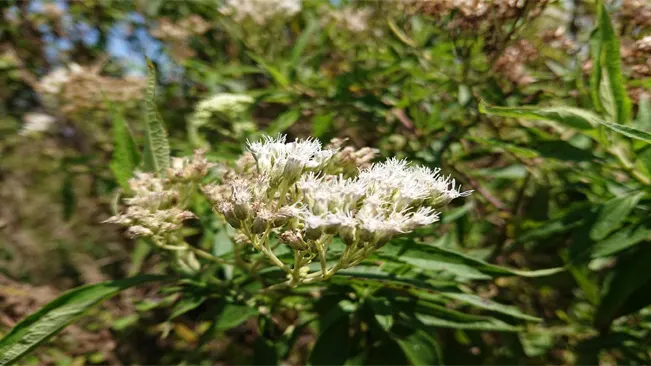
Benefits of Boneset Plant
| Benefit | Description |
|---|---|
| Fever Reduction | Historically, boneset was commonly used to reduce fever, especially in cases of influenza and common cold. |
| Immune System Support | It is believed to have immune-boosting properties, helping the body fight off infections. |
| Anti-inflammatory Properties | Boneset may help reduce inflammation, making it potentially useful in treating conditions like arthritis and muscle pain. |
| Digestive Aid | The herb has been used traditionally to aid in digestion and relieve gastrointestinal issues like constipation and indigestion. |
| Respiratory Health | It may provide relief from symptoms of respiratory conditions like bronchitis, nasal congestion, and sore throat. |
| Diaphoretic Properties | As a diaphoretic, boneset helps promote sweating, which can be beneficial in reducing fever and detoxifying the body. |
| Antimicrobial Effects | Some studies suggest that boneset has antimicrobial properties, making it effective against certain bacteria and viruses. |
| Mild Laxative | It can act as a mild laxative, helping to alleviate occasional constipation. |
| Skin Health | Topically applied, boneset may be beneficial for certain skin conditions due to its anti-inflammatory and antimicrobial properties. |
| Supportive Care in Colds and Flu | Often used in herbal medicine as a supportive treatment for colds and flu, potentially reducing the duration and severity of symptoms. |
Choosing the Right Location
Boneset thrives in full to partial sunlight. It prefers a location that receives at least six hours of sunlight per day. While it can tolerate some shade, too much will reduce its vigor and flowering potential. The ideal site is one that mimics its natural habitat – usually, damp areas near streams or in wet meadows.

Sunlight Requirements
- Amount of Sunlight: Boneset requires full to partial sunlight to flourish. The ideal scenario is to provide it with at least six hours of sunlight each day. This amount of sunlight is crucial for the plant to develop properly, ensuring robust growth and abundant flowering.
- Impact of Shade: While boneset is somewhat shade-tolerant, excessive shade can negatively impact its growth. Too much shade can lead to a reduction in the plant’s vigor, resulting in fewer flowers and a less robust plant overall. It’s important to strike a balance, providing some shade, especially in regions with very intense sun, but not so much that it impedes the plant’s growth.
Location and Soil Conditions
- Mimicking Natural Habitat: To achieve optimal growth, try to replicate boneset’s natural habitat. In the wild, boneset is commonly found in moist environments such as the edges of streams and in wet meadows. These areas offer a combination of adequate moisture and natural light, which are key to its growth.
- Soil Moisture: The soil should be consistently moist, as boneset thrives in damp conditions. However, it’s crucial to ensure that the soil is well-drained. While the plant likes moisture, standing water or overly soggy soil can lead to problems like root rot.
- Soil Type: Boneset is not overly particular about soil type. It can grow in a variety of soil compositions, including sandy, loamy, and clay soils. The key factor is the soil’s ability to retain moisture without becoming waterlogged.
Soil Requirements
This herb is not particularly fussy about soil but does best in moist, well-drained soil. It can tolerate clay, loam, or sandy soils as long as they retain some moisture. The ideal pH range for boneset is between 5.5 and 7.0. If your soil is particularly dry, consider adding organic matter to improve its moisture retention.
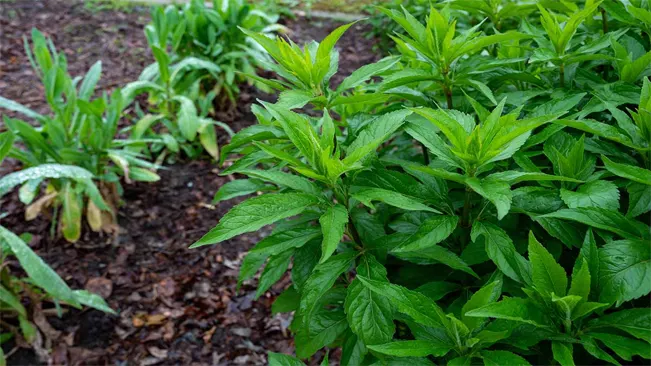
- Moisture Retention: Boneset naturally grows in wet areas, so it prefers soil that can retain moisture well. Even though it’s adaptable to various soil types, the key is ensuring the soil doesn’t dry out completely. This is particularly important during dry spells or in regions with less rainfall.
- Well-Drained Soil: While moisture is crucial, boneset also needs well-drained soil. This means the soil should be able to hold moisture but also allow excess water to drain away. Poor drainage can lead to waterlogged conditions, which might cause root rot or other fungal diseases.
- Soil Types: As mentioned, boneset can grow in a range of soil types – from clay to loam to sandy soils. Each of these soils has different characteristics in terms of drainage and moisture retention. For instance:
- Clay Soil: Tends to retain moisture well but may have drainage issues. Amending clay soil with organic matter can improve its structure and drainage.
- Loam Soil: Often considered ideal for many plants, including boneset, because it balances moisture retention and drainage.
- Sandy Soil: Drains quickly and may not retain moisture as effectively. Adding organic matter or compost can help increase its ability to hold water.
- Soil pH: The preferred pH range for boneset is slightly acidic to neutral (5.5 to 7.0). Soil pH can influence nutrient availability, so staying within this range is beneficial for the plant’s growth. If your soil is outside this pH range, you can amend it. For instance, adding lime can raise the pH (make it more alkaline), while adding sulfur can lower the pH (make it more acidic).
- Organic Matter: Incorporating organic matter like compost or well-rotted manure into the soil can significantly improve its quality for boneset. Organic matter helps in enhancing the soil’s nutrient content, moisture retention, and structure. It’s especially helpful in sandy soils that need a boost in water-holding capacity or in clay soils that need better aeration and drainage.
- Mulching: Applying mulch around the boneset plants can be beneficial. Mulch helps retain soil moisture, keeps the roots cool, and can also add organic matter to the soil as it decomposes.
Planting Boneset
Planting Boneset from Seeds
- Seed Starting Indoors
- Begin by starting the seeds indoors about 6-8 weeks before the last expected frost date. This head start is crucial because it allows the seedlings to develop sufficiently before being transplanted outdoors.
- Preparation of Seed Tray
- Use a seed-starting tray filled with a moist, high-quality seed-starting mix. This type of soil is usually lighter and more sterile than regular garden soil, ensuring better germination.
- Sowing Seeds
- Scatter the boneset seeds lightly over the surface of the soil. Then, cover them with a thin layer of soil. Boneset seeds need light to germinate, so avoid burying them too deeply.
- Maintaining Moisture
- Keep the soil consistently moist but not waterlogged. Using a spray bottle to mist the soil can be an effective way to maintain the right moisture level without overwatering.
- Germination
- Germination usually occurs within 10-20 days. Ensure the seedlings receive adequate light and warmth during this period.
- Transplanting Seedlings
- Once the seedlings are sturdy and the risk of frost has passed, transplant them to your garden. Space the plants about 18-24 inches apart to allow enough room for growth.
Propagating Boneset from Cuttings
- Taking Cuttings
- Cut a 4-6 inch section from a healthy boneset plant. Ideally, choose a segment that has several leaves and is free from any signs of disease or stress.
- Rooting the Cuttings
- Remove the leaves from the lower half of the cutting and place it in a container with water or a moist potting mix. Roots should begin to form within a few weeks.
- Transplanting
- Once the roots are well-developed, transplant the cuttings into the garden or a larger pot.
Propagating Boneset by Division
- Timing
- The best times to divide boneset are in the early spring or fall. This timing allows the plant to establish itself during cooler, wetter conditions.
- Dividing the Plant
- Carefully dig up an established boneset plant and gently separate it into smaller sections, making sure each section has roots attached.
- Replanting
- Plant the divided sections immediately in their new location, ensuring they are spaced adequately apart.
Watering and Feeding
Watering Boneset
Boneset (Eupatorium perfoliatum) is a plant that naturally thrives in wet environments, so it’s crucial to maintain consistent soil moisture. Here are key points to consider for effective watering:
- Consistent Moisture: The soil should be kept consistently moist, but it’s important to avoid waterlogging. Boneset doesn’t like to dry out completely, so regular watering is necessary, especially during periods of low rainfall or high heat.
- Monitoring Soil Conditions: Use your finger or a soil moisture meter to check the soil moisture level. Water the plant when the top inch of the soil feels dry.
- Watering Technique: It’s best to water at the base of the plant to avoid wetting the foliage, as this can lead to fungal diseases. A drip irrigation system or soaker hose is ideal for this purpose.
- Adjusting for Seasons and Weather: Reduce watering frequency during cooler months or when rainfall is abundant. Overwatering, especially in cold weather, can harm the plant.
Feeding Boneset
While boneset is not a heavy feeder, a little fertilization can encourage more robust growth. Here’s what you should know about feeding boneset:
- Type of Fertilizer: A balanced, slow-release fertilizer is ideal. Look for something with an equal ratio of nitrogen, phosphorus, and potassium (e.g., 10-10-10).
- Application Time: The best time to apply fertilizer is in the spring as new growth appears. This gives the plant a boost at the start of its growing season.
- Application Rate: Follow the instructions on the fertilizer package for application rates. Over-fertilization can be detrimental, leading to excessive foliage growth at the expense of flowers and potentially harming the plant.
- Organic Options: If you prefer organic gardening, consider using compost or well-rotted manure. These natural options provide a gentle, slow-release source of nutrients.
Pruning and Maintenance
Pruning and Maintenance of Boneset
- Timing of Pruning
- The ideal time for pruning boneset is in late winter or early spring. This timing is strategic as it prepares the plant for new growth in the spring and summer seasons. Pruning before new growth starts ensures that the plant’s energy is directed towards the development of new, healthy shoots.
- Purpose of Pruning
- Pruning is primarily done to maintain the desired shape of the plant and to encourage bushier growth. By cutting back the older stems, you stimulate the plant to produce new growth, which can result in a denser, more aesthetically pleasing plant.
- Technique
- When pruning, use clean, sharp pruning shears. Make cuts just above a node (the point on the stem where leaves are attached). This is where new growth will sprout. You don’t need to cut the plant back drastically; removing about one-third of the length of the overwintered stems is usually sufficient.
- Deadheading
- Deadheading, or the removal of spent flowers, is another aspect of boneset maintenance. By removing dead or faded flowers, you encourage the plant to focus its energy on producing more blooms rather than seed production. This can also prolong the flowering period.
- Control of Spreading
- Boneset can self-seed and spread in the garden. If you want to prevent it from spreading too much, make sure to deadhead the flowers before they set seeds. Alternatively, allow some seeds to develop if you wish to encourage natural propagation.
- General Maintenance
- Besides pruning and deadheading, general maintenance of boneset includes regular watering, ensuring the soil remains moist (but not waterlogged), and monitoring for pests or diseases. Although boneset is quite hardy, keeping an eye out for signs of stress or infestation can help address issues before they become severe.
- Winter Care
- In areas with harsh winters, you might want to add a layer of mulch around the base of the plant after pruning. This helps to protect the roots from freezing temperatures.
Pests and Diseases
Boneset is relatively resistant to pests and diseases. However, watch out for common garden pests like aphids and whiteflies. Fungal diseases such as powdery mildew can occur in humid conditions. Good air circulation and avoiding overhead watering can help prevent these issues.
Pests
- Aphids:
- Description: Small, sap-sucking insects that can be green, black, brown, or pink. They typically cluster on new growth and undersides of leaves.
- Impact: Aphids can weaken the plant by sucking its sap and can also spread diseases.
- Prevention/Treatment: You can often control aphids by spraying them off with water, introducing beneficial insects like ladybugs, or using insecticidal soaps.
- Whiteflies:
- Description: Small, white, winged insects that cluster on the undersides of leaves.
- Impact: Like aphids, they suck sap from the plant, causing yellowing or wilting of leaves. They also excrete a sticky substance called honeydew, which can lead to sooty mold.
- Prevention/Treatment: Whiteflies can be reduced by using yellow sticky traps, encouraging natural predators, or applying insecticidal soaps or neem oil.
Diseases
- Powdery Mildew:
- Description: A fungal disease that appears as white, powdery spots on leaves and stems.
- Impact: While not usually fatal, powdery mildew can weaken the plant and reduce its vigor.
- Prevention/Treatment: Increase air circulation around the plant, avoid overhead watering, and if necessary, use fungicides. Resistant varieties of boneset may also be available.
- Root Rot (in overly wet conditions):
- Description: A condition caused by various fungi that thrive in excessively moist soil conditions.
- Impact: Root rot can be fatal, causing the roots to decay, which then affects the health of the entire plant.
- Prevention/Treatment: Ensure good drainage in the soil, avoid overwatering, and use raised beds or containers if your soil is prone to waterlogging. Fungicides may help in early stages.
- Rust Fungi:
- Description: Rust fungi cause orange, yellow, or brown pustules on the undersides of leaves.
- Impact: Can lead to leaf drop and reduced plant vigor.
- Prevention/Treatment: Improve air circulation, remove infected leaves, and apply appropriate fungicides.
Harvesting and Use
Harvest boneset leaves and flowers in summer when the plant is in bloom. Cut the stems and hang them upside down in a cool, dry place for drying. Once dried, the leaves and flowers can be used to make herbal tea or tinctures.
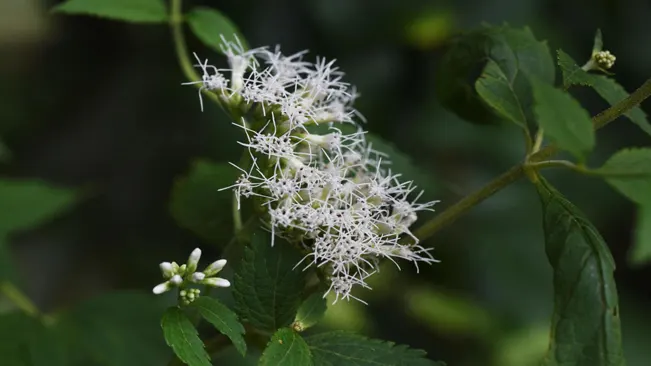
Harvesting Boneset
- Best Time for Harvesting: The optimal time to harvest boneset is during the summer, particularly when the plant is in full bloom. This is when the leaves and flowers contain the highest concentration of the active compounds.
- Identifying the Right Parts: Focus on harvesting the upper parts of the plant, which include the leaves and flowers. These parts are known for their medicinal properties.
- How to Harvest: Use clean, sharp scissors or gardening shears to cut the stems. It’s important to leave enough of the plant intact so it can continue to grow.
- Harvesting Quantity: Be mindful not to over-harvest. A good rule of thumb is to take only what you need and not more than one-third of the plant at a time. This practice ensures the plant can recover and continue to thrive.
Drying Boneset
- Preparation for Drying: After harvesting, remove any dirt or debris from the leaves and flowers. You can gently shake the stems or lightly rinse them and then pat them dry.
- Drying Process: Tie the stems together in small bunches and hang them upside down in a cool, dry place. This could be an attic, a shed, or any other well-ventilated area out of direct sunlight. Ensure good air circulation to prevent mold.
- Timeframe for Drying: The drying process can take several days to a few weeks, depending on the humidity and temperature. The plant material should be completely dry before storage.
- Storage: Once dried, store the boneset in airtight containers, away from light and moisture. Properly dried boneset can be stored for up to a year.
Using Boneset
- Herbal Tea: To make boneset tea, steep 1-2 teaspoons of dried leaves and flowers in boiling water for about 10-15 minutes. Strain and enjoy. This tea is traditionally used for its fever-reducing and immune-boosting properties.
- Tinctures: Boneset can also be used to make tinctures. Soak the dried plant material in alcohol for several weeks, shaking the container regularly. Strain the liquid and store it in a cool, dark place.
- Dosage and Precautions: It’s crucial to adhere to recommended dosages, as excessive consumption of boneset can be toxic. Always consult with a healthcare provider before using boneset, especially if you have existing health conditions or are taking medications.
- Topical Use: For external use, boneset can be infused in oil or made into a poultice for applying to the skin, although this is less common.
Conclusion
Growing boneset can be a rewarding experience for gardeners interested in medicinal herbs. With its minimal care requirements and multiple uses, boneset is an excellent addition to any garden. By following these simple guidelines, you can successfully cultivate this valuable plant and enjoy both its beauty and its healing properties.
FAQs (Frequently Asked Questions)
- What is boneset and where does it naturally grow?
- Boneset (Eupatorium perfoliatum) is a perennial herb native to North America. It’s commonly found in wet, marshy areas like meadows and along stream banks.
- Boneset (Eupatorium perfoliatum) is a perennial herb native to North America. It’s commonly found in wet, marshy areas like meadows and along stream banks.
- What kind of soil is best for growing boneset?
- Boneset prefers moist, well-drained soil. It can grow in various soil types, including clay, loam, and sandy soils, as long as the soil retains moisture.
- Boneset prefers moist, well-drained soil. It can grow in various soil types, including clay, loam, and sandy soils, as long as the soil retains moisture.
- How much sunlight does boneset need?
- It thrives in full to partial sunlight. Ideally, it should receive at least six hours of sunlight each day.
- It thrives in full to partial sunlight. Ideally, it should receive at least six hours of sunlight each day.
- When is the best time to plant boneset?
- The best time to plant boneset is in the spring after the last frost. If you’re starting from seeds, you can start them indoors 6-8 weeks before the last expected frost.
- The best time to plant boneset is in the spring after the last frost. If you’re starting from seeds, you can start them indoors 6-8 weeks before the last expected frost.
- Can boneset be grown in pots?
- Yes, boneset can be grown in pots, provided the pot is large enough and has good drainage. Remember to keep the soil consistently moist.
- Yes, boneset can be grown in pots, provided the pot is large enough and has good drainage. Remember to keep the soil consistently moist.
- How often should I water boneset?
- Water boneset regularly to keep the soil moist, especially during dry spells. Avoid overwatering to prevent root rot.
- Water boneset regularly to keep the soil moist, especially during dry spells. Avoid overwatering to prevent root rot.
- Does boneset require fertilization?
- Boneset is not a heavy feeder, but applying a balanced, slow-release fertilizer in the spring can promote healthier growth.
- Boneset is not a heavy feeder, but applying a balanced, slow-release fertilizer in the spring can promote healthier growth.
- How do I propagate boneset?
- Boneset can be propagated through seeds, stem cuttings, or by dividing mature plants. Propagation by division or cuttings is generally more reliable for maintaining plant quality.
- Boneset can be propagated through seeds, stem cuttings, or by dividing mature plants. Propagation by division or cuttings is generally more reliable for maintaining plant quality.
- Are there any common pests or diseases that affect boneset?
- Boneset is fairly resistant to pests and diseases. However, it can occasionally be affected by aphids, whiteflies, and fungal diseases like powdery mildew in humid conditions.
- Boneset is fairly resistant to pests and diseases. However, it can occasionally be affected by aphids, whiteflies, and fungal diseases like powdery mildew in humid conditions.
- When and how should I harvest boneset?
- Harvest boneset during summer when it’s in bloom. Cut the stems and hang them upside down in a cool, dry place for drying. The dried leaves and flowers can be used for teas or tinctures.

Kristine Moore
Forestry AuthorI'm Kristine Moore, a seasoned garden landscaping professional with over 30 years of experience. My extensive career has been dedicated to transforming outdoor spaces into stunning, sustainable landscapes. With a deep understanding of horticulture, design principles, and environmental stewardship, I have become a respected figure in the field, known for creating harmonious, visually appealing, and eco-friendly gardens. My commitment to excellence and continuous learning in landscaping trends and techniques has solidified my reputation as an expert in garden design and implementation.




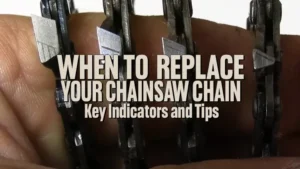



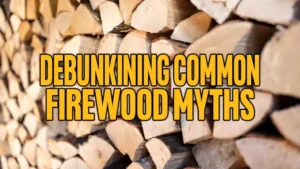
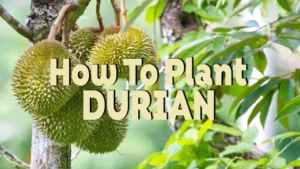



Leave your comment